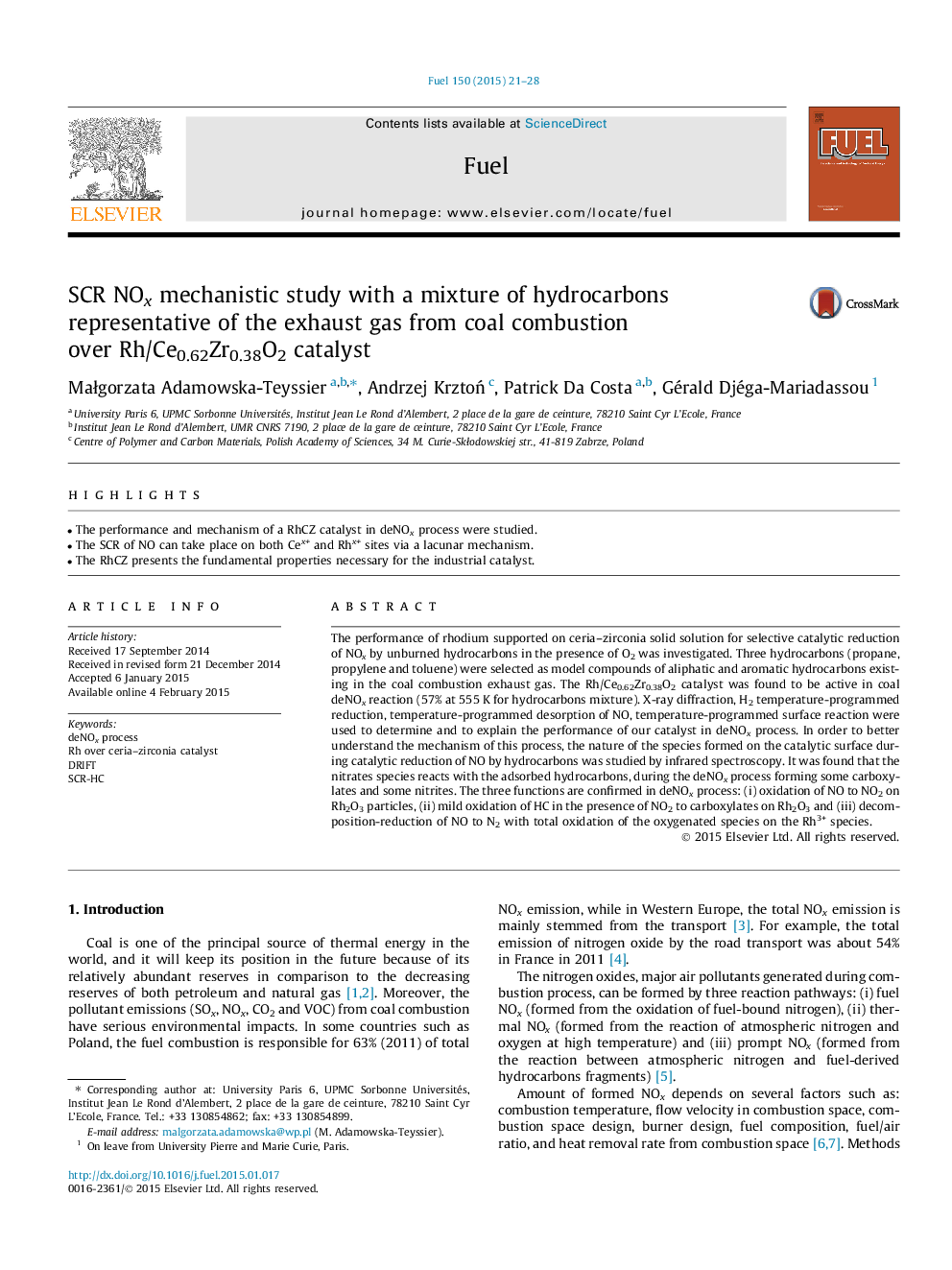| Article ID | Journal | Published Year | Pages | File Type |
|---|---|---|---|---|
| 205682 | Fuel | 2015 | 8 Pages |
•The performance and mechanism of a RhCZ catalyst in deNOx process were studied.•The SCR of NO can take place on both Cex+ and Rhx+ sites via a lacunar mechanism.•The RhCZ presents the fundamental properties necessary for the industrial catalyst.
The performance of rhodium supported on ceria–zirconia solid solution for selective catalytic reduction of NOx by unburned hydrocarbons in the presence of O2 was investigated. Three hydrocarbons (propane, propylene and toluene) were selected as model compounds of aliphatic and aromatic hydrocarbons existing in the coal combustion exhaust gas. The Rh/Ce0.62Zr0.38O2 catalyst was found to be active in coal deNOx reaction (57% at 555 K for hydrocarbons mixture). X-ray diffraction, H2 temperature-programmed reduction, temperature-programmed desorption of NO, temperature-programmed surface reaction were used to determine and to explain the performance of our catalyst in deNOx process. In order to better understand the mechanism of this process, the nature of the species formed on the catalytic surface during catalytic reduction of NO by hydrocarbons was studied by infrared spectroscopy. It was found that the nitrates species reacts with the adsorbed hydrocarbons, during the deNOx process forming some carboxylates and some nitrites. The three functions are confirmed in deNOx process: (i) oxidation of NO to NO2 on Rh2O3 particles, (ii) mild oxidation of HC in the presence of NO2 to carboxylates on Rh2O3 and (iii) decomposition-reduction of NO to N2 with total oxidation of the oxygenated species on the Rh3+ species.
